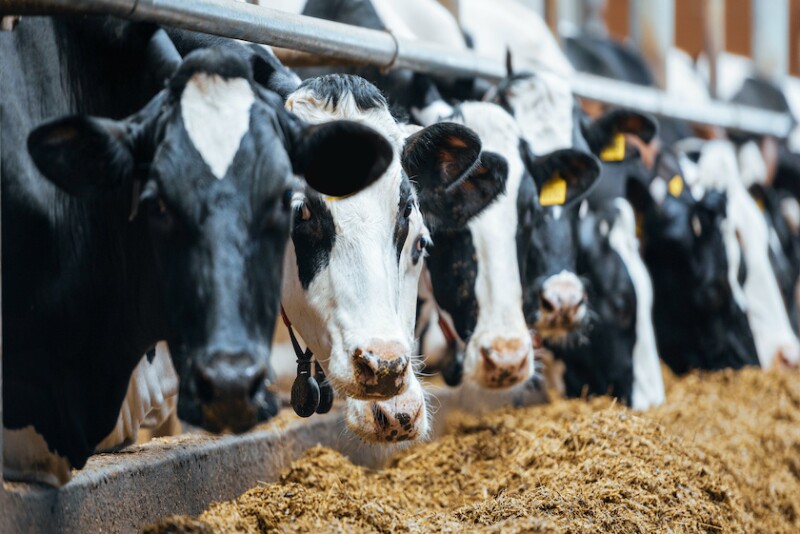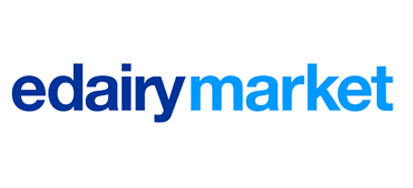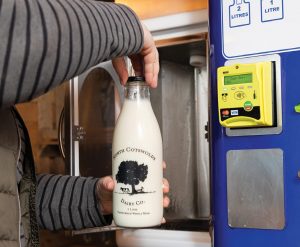The sustained strength in beef prices has provided continued life and attention to this supplementary income stream. Higher cull cow values and strategic breeding decisions – such as terminally breeding – are optimizing herd management and replacement strategies. This has led many to ask about its impact on future milk supply. Based on our economic modeling of milk supply as well as evidence from recent cow number reports, these farm-level adjustments in dairy cattle inventory are not likely to constrain milk supply. These trends of terminal breeding and close attention to replacement inventory will likely continue influencing on-farm dairy production decisions throughout 2025 and beyond.
Bearish market drivers
Policy uncertainty has been a significant concern for the dairy industry, with trade, labor and food assistance programs all contributing to potential price volatility in 2025. Research by Dr. Charles Nicholson, University of Wisconsin – Madison, has analyzed the potential impacts of these policy shifts on the dairy sector. Nicholson’s economic modeling suggests that various trade policies, labor constraints and reductions in food assistance programs could lead to substantial price reductions and profitability losses for U.S. dairy producers.
Tariffs imposed on major trading partners disrupt export markets, limiting demand for U.S. dairy products, and impact farm-level prices. The U.S. exports nearly one-fifth of dairy components, primarily nonfat solids, with Mexico, Canada and China collectively accounting for about 40% of the total value of U.S. dairy exports in 2024. Retaliatory tariffs make U.S. dairy products less competitive and depress farm milk prices. Nicholson’s research indicates that retaliatory tariff trade policies imposed at 25% could reduce all-milk prices by as much as $1.90 per cwt from established baseline prices and decrease cumulative U.S. dairy export values by up to $22 billion over four years. Additionally, the Class III milk price could decline by as much as $2.86 per cwt.
Food assistance program reductions also pose a risk to domestic dairy demand. Federal nutrition programs such as the Supplemental Nutrition Assistance Program (SNAP); Women, Infants and Children (WIC); the Healthy Fluid Milk Initiative (HFMI) and school meal programs help to support dairy consumption. It is estimated that nearly 10% of U.S. fluid milk consumption occurs through school-based programs alone. Reductions in government funding for these initiatives would likely result in lower demand for dairy products, placing additional downward pressure on prices. Nicholson’s projections indicate that a 4% decrease in policy-driven cuts to food assistance programs could lead to a 65-cent-per-cwt decrease in all-milk price and $1.15-per-cwt decrease in Class III price from their respective baseline prices.
Labor and immigration policies remain a pressing concern for dairy producers, particularly for large-scale operations that rely heavily on hired labor. Labor accounts for approximately 25% of total dairy farm operating costs, and for larger farms this percentage can be higher. Proposed immigration policies that reduce the availability of non-U.S. workers could exacerbate labor shortages, leading to increased wage costs and disruptions in productivity as farms struggle to recruit and train new workers. Dairy processors and cheese manufacturers would also see higher operational expenses as a result of increased labor costs. This same research assumes that if such policies increase farm wage costs by 20% and lead to a temporary 10% decline in productivity due to labor disruptions, farm profitability – measured as net farm operating income (NFOI) – would decline by $64,482 per year following policy implementation. This represents a 30.9% reduction in NFOI relative to the baseline scenario.
Beyond high-profile labor and trade debates, a series of smaller federal policy changes may cumulatively impact U.S. dairy demand. Proposed funding cuts to senior and child nutrition programs, along with reductions in dairy-related support, pose incremental but potentially meaningful risks. For instance, the House fiscal year 2025 Labor-HHS bill includes a $37 million reduction to Older Americans Act (OAA) nutrition programs, roughly 15% of the budget supporting Meals on Wheels and related services. These programs deliver approximately 250 million meals annually, and if 15% of those meals are eliminated – about 37 million fewer servings – and each includes 8 ounces of milk, it could result in 2.3 million fewer gallons (roughly 20 million pounds) of milk consumption. Additional proposals, such as the elimination of the Social Services Block Grant used by 37 states to fund local senior meal programs, could further constrain dairy demand among older populations.
Other programs face similar pressures. The USDA’s fiscal year 2025 budget request reduces the Dairy Business Innovation Initiative by nearly 58%, from $25 million to $10.3 million, limiting funding for value-added dairy product development. While this does not directly reduce current milk use, it may slow market innovation and limit future demand growth. Taken together with recent changes to WIC milk allowances and proposed cuts to SNAP and school meal eligibility, these adjustments could remove tens of millions of gallons of dairy demand annually. Though individually modest, the effects are additive in a market sensitive to shifts. With approximately 26 billion gallons of milk produced in 2023, even a 20-million-gallon reduction – equivalent to 172 million pounds – represents a noticeable tightening. As Congress debates fiscal year 2025 appropriations and finalizes the long-delayed 2023 Farm Bill, stakeholders across the supply chain will be closely monitoring how these incremental changes may move through dairy markets.
Looking beyond the first half of 2025, bearish factors will also include the increasing efficiency of milk solids production and the challenges of managing new dairy products entering the market. While overall milk production declined in 2024, efficiency gains have led to higher milk solids output. As of March 2025, the average U.S. butterfat test reached 4.36%, up 0.088 percentage points from the previous year, while the average protein test rose to 3.38%, an increase of 0.04 percentage points. For context, in 2020, the average butterfat test was 3.95%, and the protein test was 3.181%. Despite a 0.35% year-to-date decline in total milk production in 2025, calculated milk solids production increased by 1.65% as of March, 2025. This increase in production efficiency coupled with an increase in the national herd of 15,000 head from January to March of 2025 and an increase of 57,000 head year-on-year, means the industry can meet new demand for milk solids more quickly than in the past.
Much of the new processing investments are concentrated in cheese production. This shift will lead to greater Class III utilization and, eventually, increased pressure on Class III prices. Analyzing the weighted average advertised retail prices of cheese reported by USDA AMS Dairy Market News from 2016 to 2025, we observe a price floor of approximately $3.49 per pound and a ceiling of $4.39 per pound. This persistent 97-cents-per-pound range has made it difficult for Class III prices to sustain upward momentum.
Meanwhile, the weighted average retail price for butter has established a new price range. Prior to April 2022, retail butter prices fluctuated between a floor of about $2.77 per pound and a ceiling of about $3.78 per pound – a range of $1.01 per pound. Since April 2025, prices have shifted higher, ranging between a new floor of about $3.79 per pound (the previous ceiling) and a ceiling of about $4.79 per pound, a 20-cent-per-pound range. This sustained increase at the retail level has provided support for Class IV prices.
Historically, less than 2% of U.S. butter production has been exported, suggesting that Class IV prices may be more insulated from current policy uncertainties. However, if we aim to maintain or increase Class III prices in 2025, strong export demand will be needed.
Market sentiment remains mixed, with supportive export trends offset by domestic weakness and global uncertainty. U.S. cheese exports have outperformed expectations due to lower prices relative to the EU, where tight milk supplies have driven prices higher. This price gap has made U.S. product more competitive, but the advantage is fragile. As EU production recovers – now showing early signs of doing so – global prices may fall, and U.S. exports could slow abruptly, much like the sudden stop in musical chairs. International sales of cheese and butter are strong, and if current trends continue, a record year for butter exports is possible. Domestically, demand has been struggling, particularly in the food service sector, with declining sales at major chains like McDonald’s and broader consumer caution tied to inflation concerns. Regionally, the milk supply is long in the Midwest and short in other areas of the U.S. Further complicating the outlook, recent trade policy changes prompted prebuying ahead of potential tariffs, but their full effect has yet to appear in the data. Overall, the market is navigating these signals, with key outcomes still hinging on future trade, stocks and production reports.
U.S. dairy markets face a complex year. While export demand and record-high processing investment offer bullish momentum, policy uncertainty – spanning labor, trade and nutrition assistance – combined with soft domestic demand and rising milk solids production efficiency, is exerting downward pressure. With FMMO reforms taking effect and EU milk output rebounding, the balance of global and domestic forces will determine how long current price levels can hold.
You can now read the most important #news on #eDairyNews #Whatsapp channels!!!
🇺🇸 eDairy News INGLÊS: https://whatsapp.com/channel/0029VaKsjzGDTkJyIN6hcP1K



























